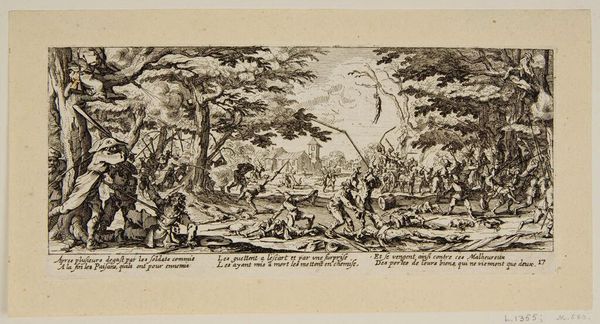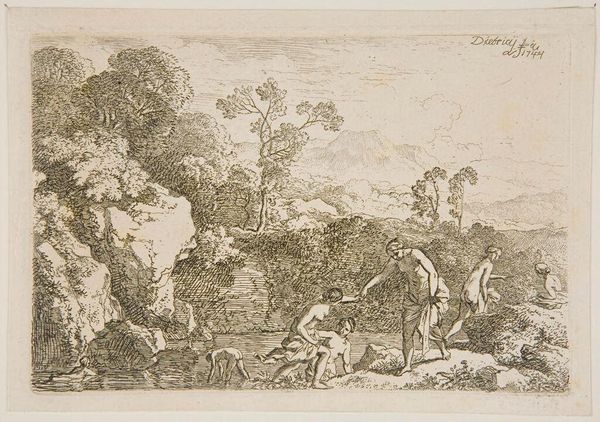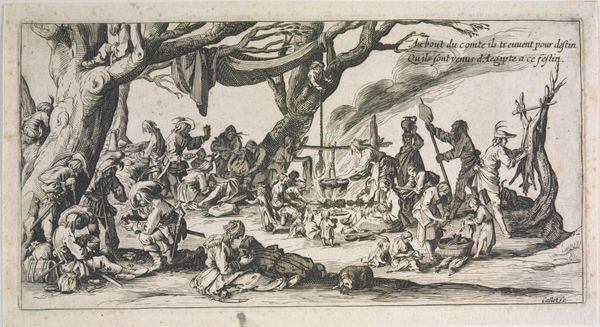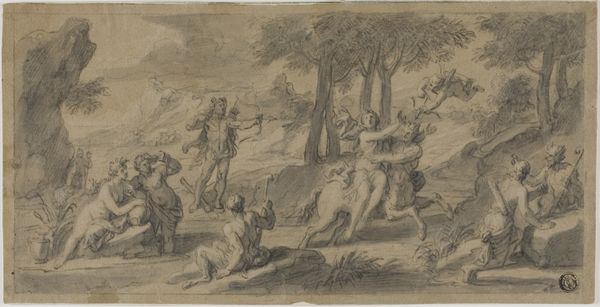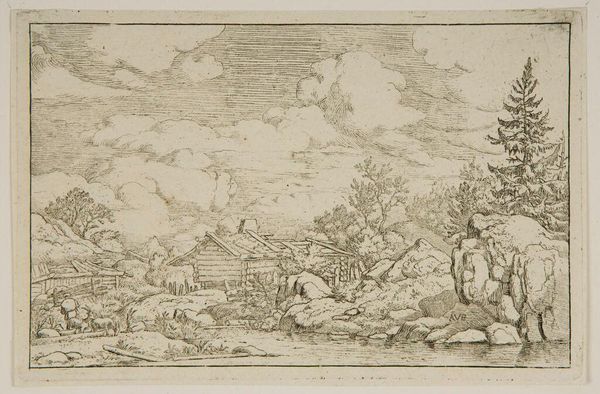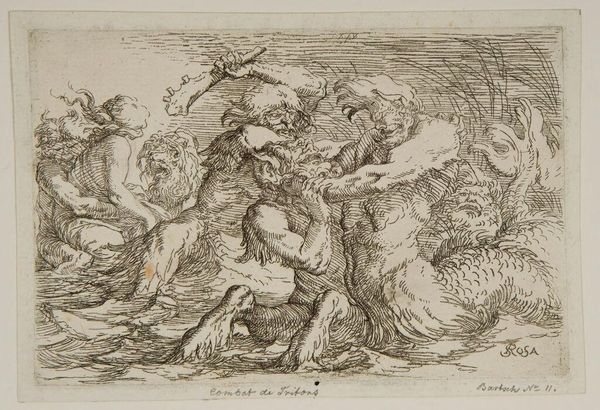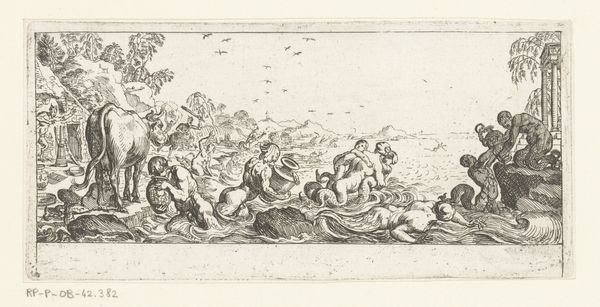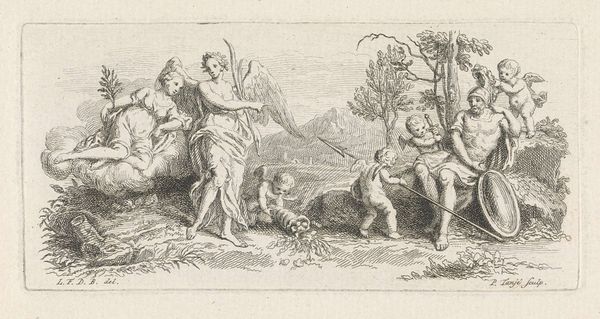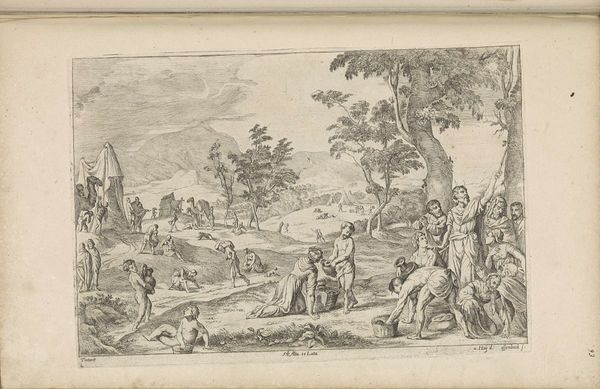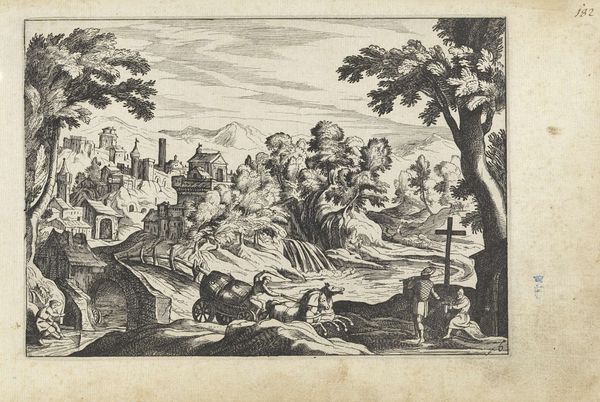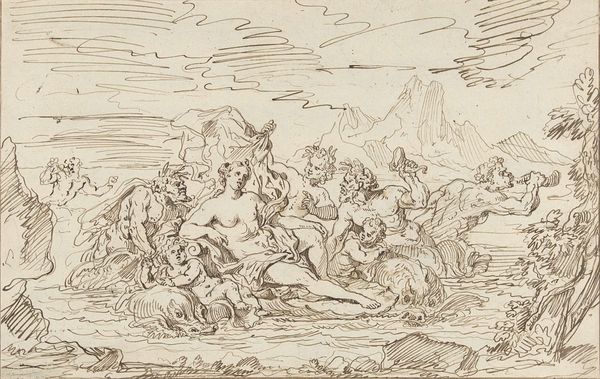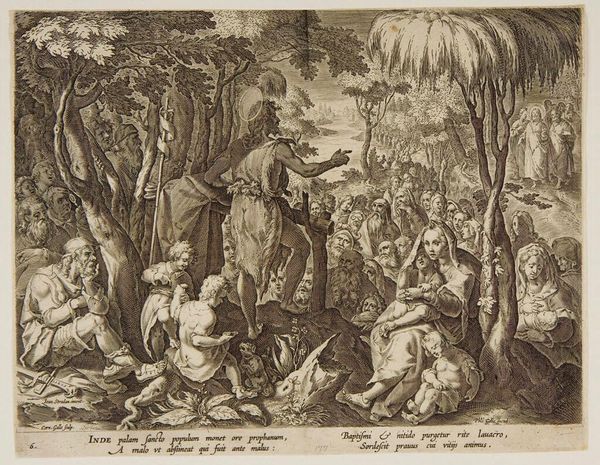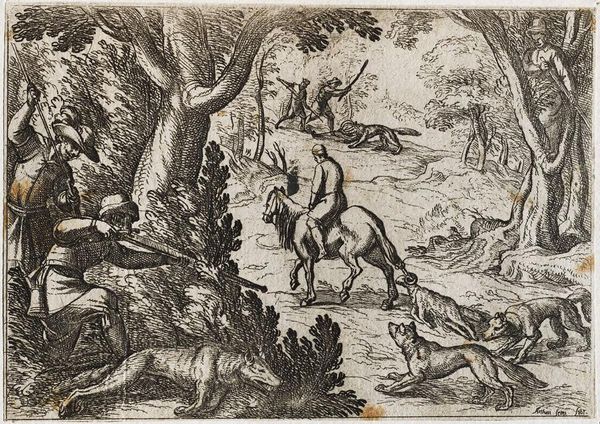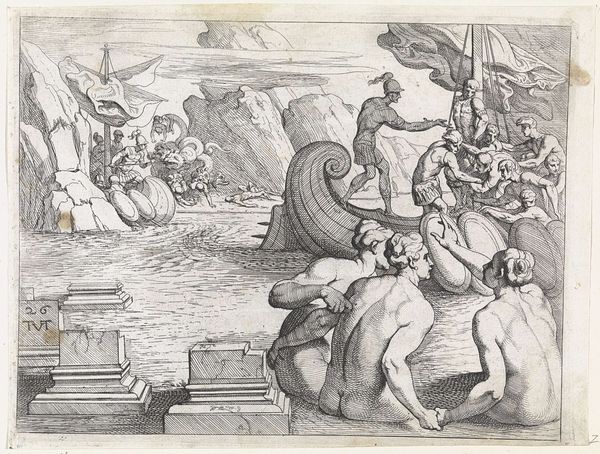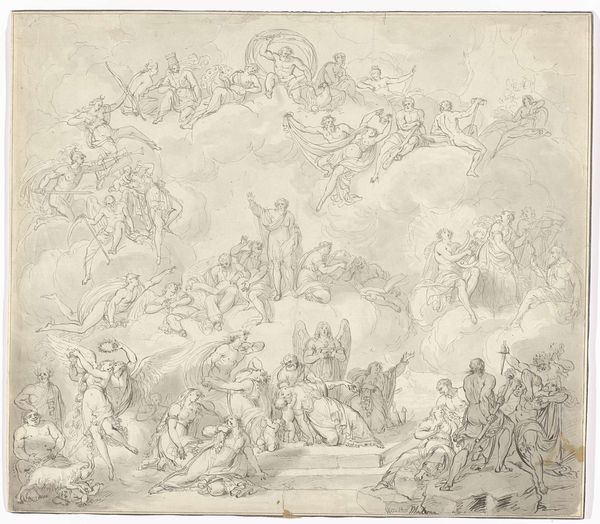
Copyright: CC0 1.0
Editor: This is a frieze by Johann Ulrich Kraus, from around the late 17th-early 18th century, currently housed at the Harvard Art Museums. Looking at the mythological figures, what stands out to me is the depiction of power, especially in the lower register with Neptune. What do you see in this piece? Curator: The frieze, with its classical allusions, speaks volumes about the intended audience and their cultural capital. Kraus uses imagery rooted in Greco-Roman mythology not merely for aesthetic appeal, but to signal a shared understanding of power, knowledge, and tradition. How might the placement of such a frieze have reinforced societal hierarchies? Editor: So it's less about the literal mythological story, and more about what it represents to the people viewing it? Curator: Precisely. The mythological scenes legitimized the patron's authority by linking them to a lineage of power figures from the classical world. Editor: That's a new way of viewing historical art for me. Thanks!
Comments
No comments
Be the first to comment and join the conversation on the ultimate creative platform.
